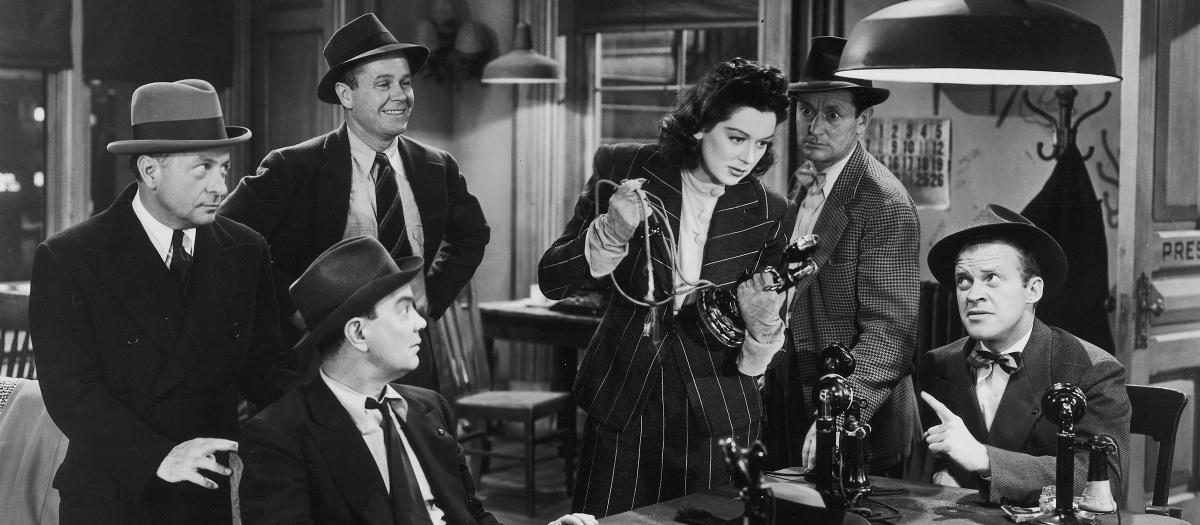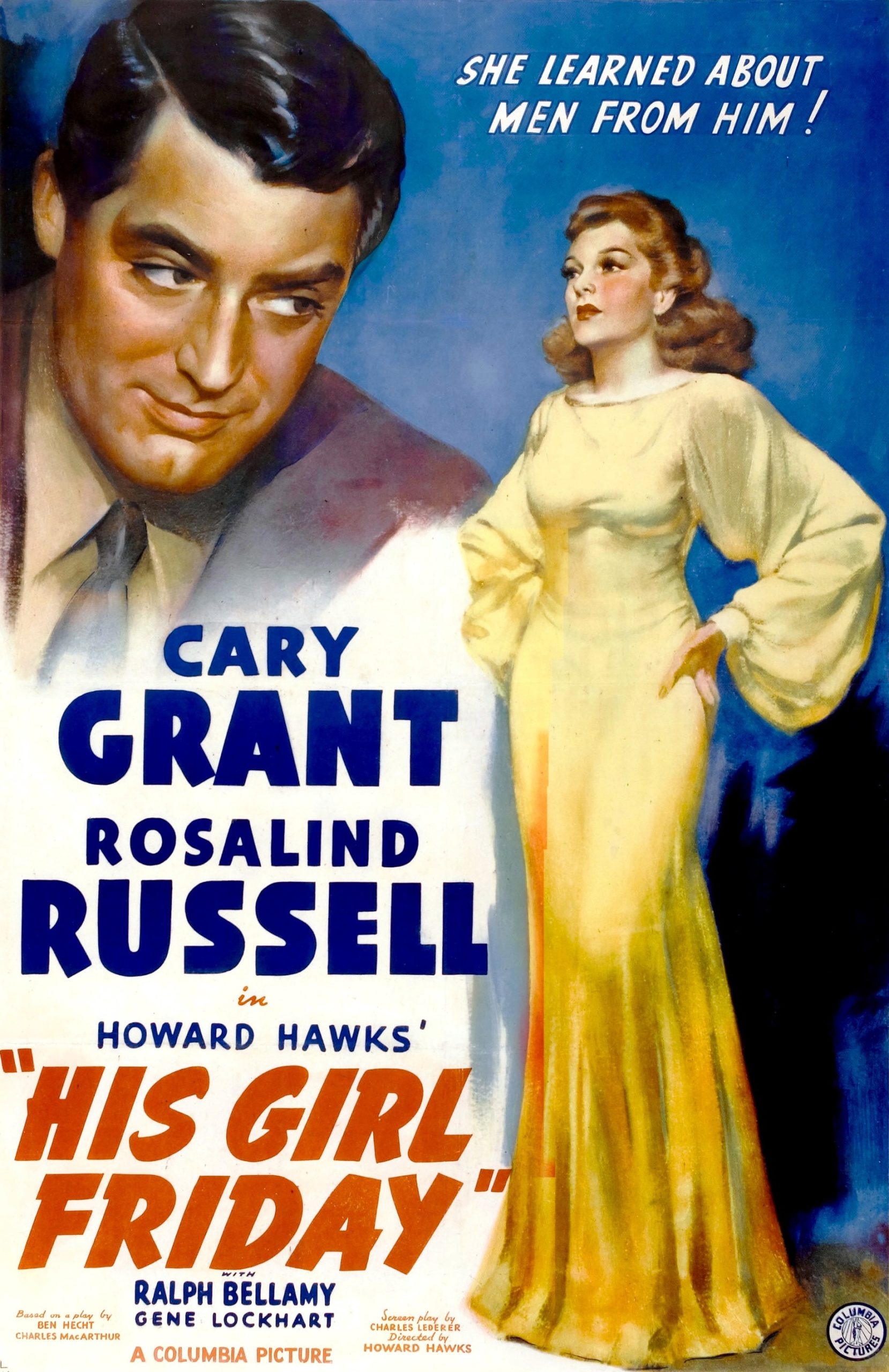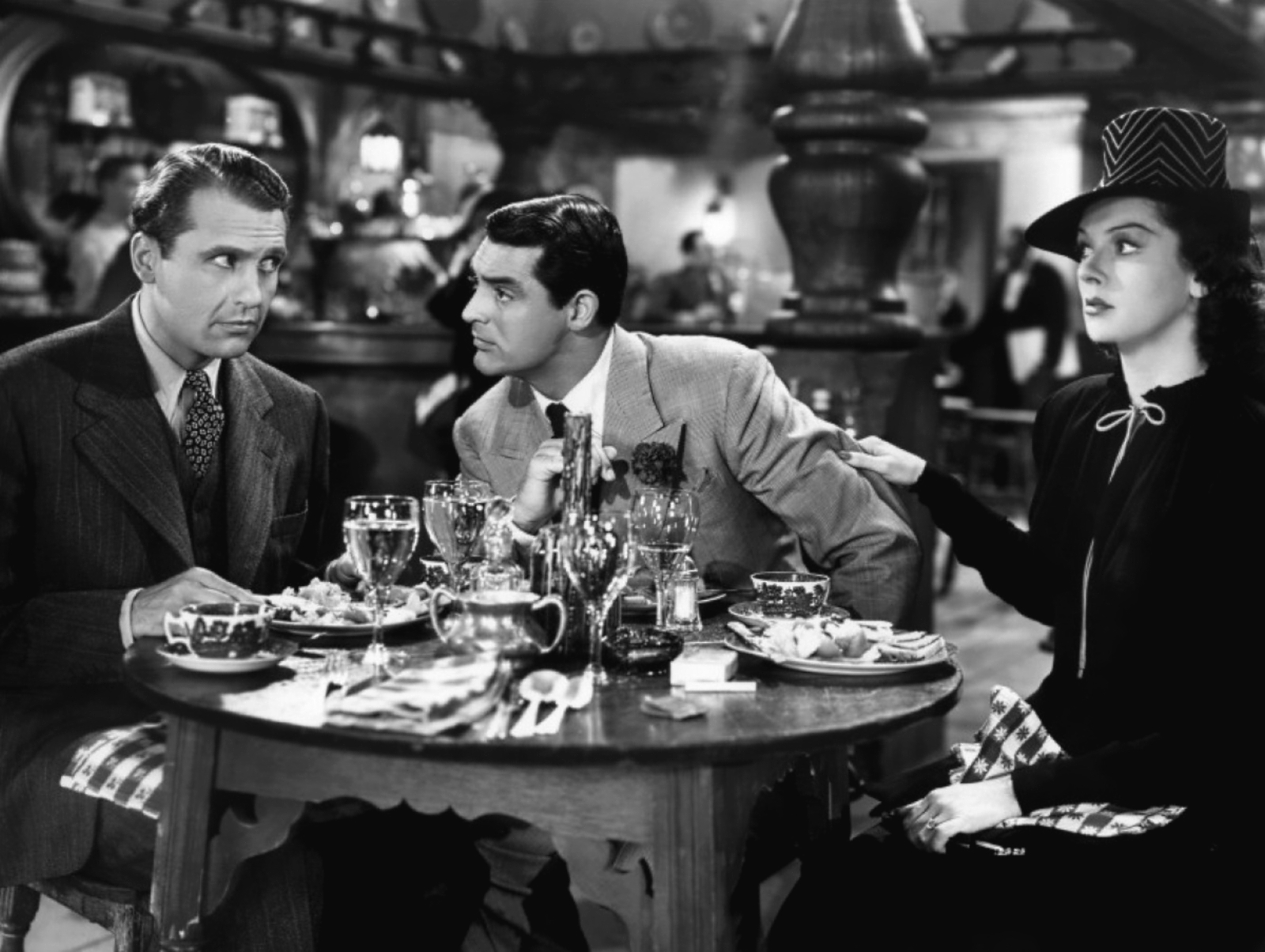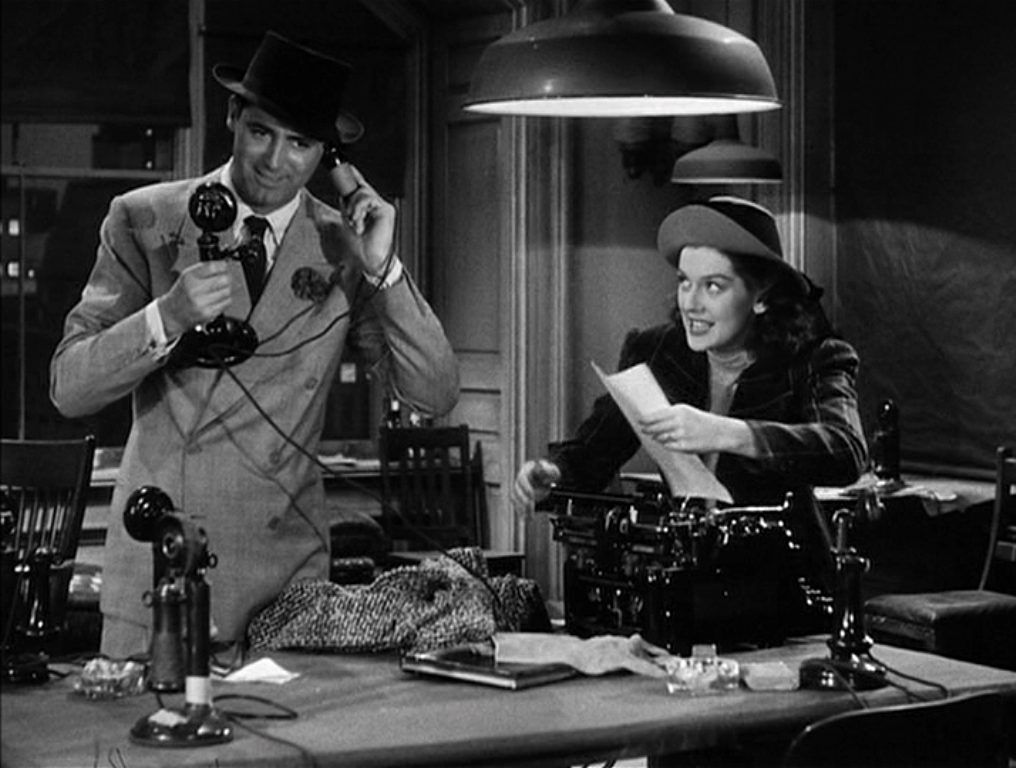

“I’m more or less particular about who my wife marries.”
As the story goes, during auditions for His Girl Friday, Howard Hawks’ female secretary read the lines of Hildy Johnson, a headstrong newspaper reporter aiming to leave the police beat, get married, and settle down. In Ben Hecht and Charles MacArthur’s original play, Hildy was a man (and was portrayed by Pat O’Brien in Lewis Milestone’s 1931 film adaptation), but Hawks enjoyed the snappy dialogue coming from the mouth of a woman so much that he decided to have the script rewritten by Charles Lederer to accommodate the change. More than a mere gender swap, however, Hawks’ version fundamentally alters the relationship between Hildy (Rosalind Russell) and her boss, Walter Burns (Cary Grant), editor of The Morning Post. Instead of an employer scheming to keep his star employee, His Girl Friday casts Walter as Hildy’s wily ex-husband who would go to great lengths to win back her affections. Perhaps he would even sabotage her plans to run off and get married to a genial insurance salesman (Ralph Bellamy) by roping her into covering the career-making story of an escaped criminal.
While the tale of the film’s conception may very well be apocryphal—another version has Hawks whipping out a copy of the stage play at a party when discussions turned toward dialogue—its origins matter much less than the achievement of the film itself. The “talkie” era had begun in Hollywood little more than a decade prior, and in the intervening years film soundscapes had gradually evolved from theatrically artificial assemblies of concisely delivered lines to a slightly more energetic style, especially in comedies. But His Girl Friday is on another level entirely when it comes to dialogue; perhaps more closely aligned with Altman’s “mike everyone” method that emerged in the 1970s than what was common practice at the time (although Hawks couldn’t just mike everyone, requiring a finely-tuned sound department to be completely in-sync with the director and cast). Indeed, one wonders if Altman’s signature style would have developed in quite the same way without Hawks’ film as a touchstone.
The crucial thing to note is that two seemingly contradictory things are happening simultaneously: Hawks is directing from a whip tight script and his actors are improvising. The film takes enough detours that it doesn’t feel claustrophobic—to the newspaper office, to a restaurant, to the prison, etc.—but the bulk of it is set in the press room on the second floor of the criminal courts building which overlooks the gallows where Earl Williams (John Qualen) is set to hang in the morning. In this room is packed a gang of reporters from various newspapers who are constantly on the phones, spitballing about the case, gossiping, riffing on well worn topics. What they’re saying is much less important than the fact that they’re talking, generating a sense of yappy agitation atop which Russell and Grant muster up a storm of rapid-fire verbal gymnastics that is unleashed on the viewer without relent for an hour and a half straight. It’s such an onslaught that there isn’t a note of music until the final fade-out.

But these hijinks are far from mere showboating for its own sake, even if the wordplay and delivery are sufficiently amusing for that. Rather, it is used to draw rich characters. At the top of the heap is Grant’s Walter, a motor-mouthed huckster of great wit who can throw out a paragraph’s worth of dialogue without taking a breath and will stoop to any nasty trick to get the scoop and the girl. Counterfeit money, petty theft, obstruction of justice, kidnapping—all’s fair in love and war. And yet we can’t help but smile at his charming antics. As Hildy says, he’s “wonderful, in a loathsome sort of way.” Perhaps equal to him—and when he’s off screen, supremely capable of dominating—is Russell’s Hildy, a similarly shrewd yammerer who gradually comes to realize that she is hopelessly in love with the hustle and bustle of the breaking news lifestyle. The way that Russell capably uses body language to relay her contradictory feelings about Walter’s scheming even while shooting off at the mouth is jaw dropping. It’s hard to imagine that Russell was something like sixth in line for the part. The supporting players (Gene Lockhart, Clarence Kolb, Abner Biberman, Helen Mack, Billy Gilbert among them), while less fully-realized, serve to flesh out the madcap world of the film.

All of this unfolds faster than is possible to take in, as the principals volley sarcastic quips back and forth, speak over top of one another, and hold multiple phone conversations concurrently. There are even a few brilliant instances of fourth wall breaking and meta-humor (“He looks like that fellow in the movies… Ralph Bellamy.”) which came about when Hawks encouraged his stars to ad-lib and play off one another.
There’s more to the film, including its satirical, socially-aware backdrop—the indiscriminate mockery, which takes aim at local politicians, police officers, and reporters; the cynically contrived murder case and impending execution (a white man is accused of shooting black cop in the months leading up to an election, so the current regime is seeking the death penalty in order to win the black vote); even Hildy’s genre-swap which turns her into a woman capable of mixing with men in the workplace and allows Hawks to draw parallels between the impending marriage and the impending hanging. While these elements are worth noting, they’re never jagged edges that distract, much less detract. They’re all cleverly worked into the script such that the viewer is primarly aware only of being pleasantly swept up by the unyielding rush of amusing worldplay. How many comedies become funnier upon rewatching them because you missed so many classic lines the first few times?